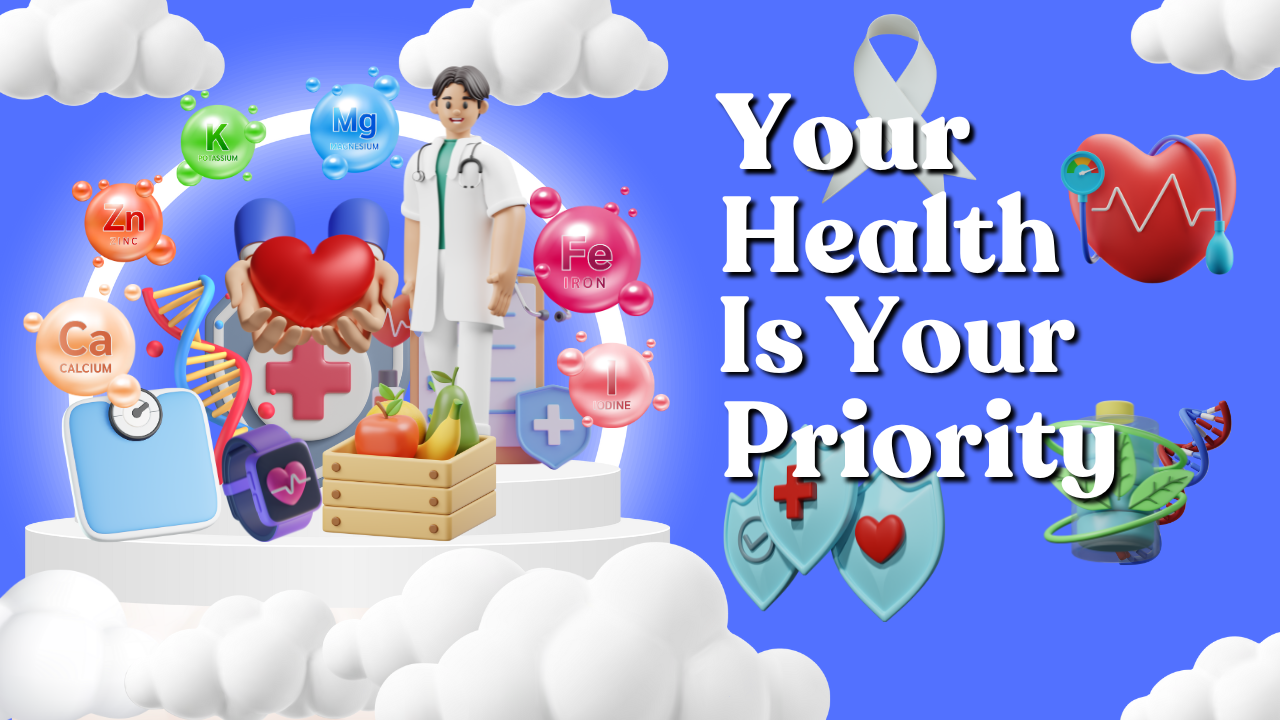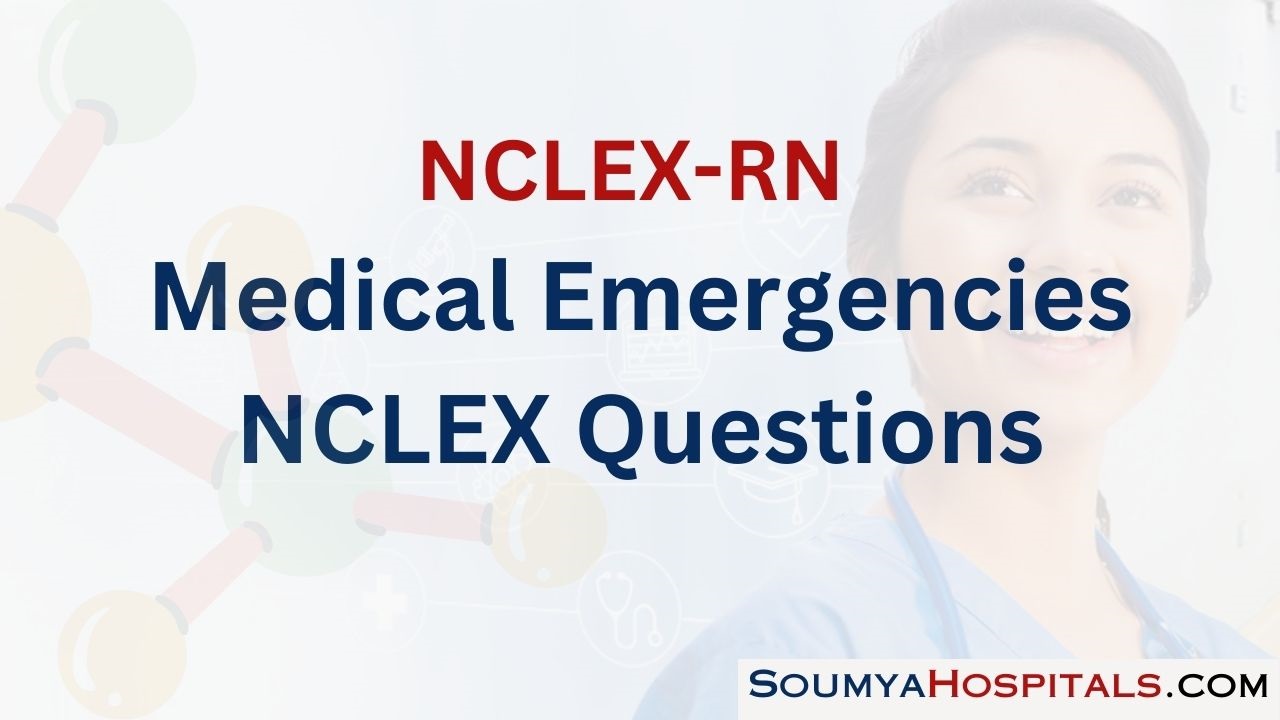The NCLEX Questions are designed to reflect the types of scenarios and patient situations encountered in real-world nursing practice.
NCLEX Medical Emergencies Questions - NCLEX Questions on Medical Emergencies
Medical Emergencies NCLEX Practice Questions
Question 1.
A 25-year-old pregnant woman presents to the emergency department with rapid onset of severe respiratory distress, hypoxia, and pulmonary hypertension. She is in her third trimester of pregnancy and was admitted for delivery.
What is the best initial intervention for this patient's condition?
(a) Oxygen supplementation
(b) Intravenous fluids
(c) Intubation
(d) An emergency caesarean section
Answer:
(a) Oxygen supplementation
Explanation:
Oxygen supplementation is the best initial intervention for this patient's condition as it is the most immediate and crucial step in treating amniotic fluid embolism. This will help to alleviate the hypoxia and respiratory distress that the patient is experiencing.
Question 2.
A 35-year-old woman presents to the clinic with heavy vaginal bleeding and an irregular menstrual cycle. She reports having had this issue for several months now'.
What is the best treatment for this patient's condition?
(a) An oral contraceptive
(b) A hysterectomy
(c) Estrogen
(d) A non-steroidal anti-inflammatory drug
Answer:
(c) Estrogen
Explanation:
The best treatment for this patient's condition wall depend on the underlying cause of her abnormal vaginal bleeding. In this case, she has reported heavy bleeding and an irregular menstrual cycle, wTiicb is consistent with dysfunctional uterine bleeding. The administration of estrogen is a common treatment for this condition and can help regulate the menstrual cycle and reduce heavy bleeding.
Question 3.
A 30-year-old woman presents to the emergency department with acute pelvic pain, fever, and an elevated white blood cell count. She reports having had unprotected sexual intercourse a few days ago.
What is the best treatment for this patient's condition?
(a) Elospitalization
(b) Antimicrobial drugs
(c) An endometrial ablation
(d) A hysterectomy
Answer:
(b) Antimicrobial drugs
Explanation:
The best treatment for this patient's condition is the administration of appropriate antimicrobial drugs such as ceftriaxone, azithromycin, metronidazole, and doxycycline. This will help to treat the underlying infection caused by Neisseria gonorrhoeae or Chlamydia trachomatis, which are common pathogens associated with pelvic inflammatory disease.
Question 4.
A 25-year-old woman presents to the emergency department with decreased urinary output, intense abdominal pain, shortness of breath, diarrhea, and thirstiness. She reports having undergone in vitro fertilization a few days ago.
What is the best treatment for this patient's condition?
(a) Hospitalization
(b) Anticoagulating medications
(c) Increasing fluid intake
(d) Respiratory support
Answer:
(a) Hospitalization
Explanation:
The best treatment for this patient's condition will depend on the severity' of her symptoms. In this case, she is experiencing several symptoms that indicate a life-threatening medical emergency, including decreased urinary output and intense abdominal pain. Hospitalization is the best initial intervention as it will provide her with immediate and appropriate care and monitoring.
Question 5.
A patient presents with tenderness, swelling and redness around the mastoid bone, severe ear pain, a temperature, pus and other ear drainage, and a displaced pinna. The patient is diagnosed with Mastoiditis.
What is the best treatment option for Mastoiditis?
(a) Myringotomy
(b) Antibiotics
(c) Mastoidectomy
(d) All of the above
Answer:
(d) All of the above
Explanation:
Mastoiditis is a serious middle ear infection that adversely affects the mastoid bone. The best treatment option is a combination of intravenous antibiotics, a myringotomy, and a mastoidectomy. All three options are important in treating Mastoiditis effectively.

Question 6.
A patient presents with loss of sensory and motor function, pain, nausea, vomiting, impaired urinary function, paralytic ileus, and hypothermia. The patient is diagnosed with a Spinal Cord Injury. What is the best intervention for a Spinal Cord Injury?
(a) Immobilization and stabilization of the spinal cord
(b) Pain management
(c) Correction of hypothermia
(d) All of the above
Answer:
(d) All of the above
Explanation:
Spinal cord injuries are a medical emergency and all interventions should be done to preserve life and prevent any further spinal cord damage. Immobilization and stabilization of the spinal cord, pain management, correction of hypothermia, and other interventions such as intubation and mechanical ventilation are all important in treating Spinal Cord Injuries effectively.
Question 7.
A 50-year-old male presents with redness and discoloration of the skin on his right calf, along with pain, tenderness, swelling and warm skin at the site. He also reports shortness of breath and chest pain. The patient's vital signs show tachycardia and hypotension.
What is the most likely diagnosis for this patient?
(a) Deep Vein Thrombosis
(b) Cardiogenic Shock
(c) Anaphylactic Shock
(d) Neurogenic Shock
Answer:
(b) Cardiogenic Shock
Explanation:
The patient's symptoms of redness and discoloration of the skin, pain, tenderness, swelling, and warm skin at the site suggest Deep Vein Thrombosis. However, the presence of shortness of breath and chest pain along with tachycardia and hypotension point towards a possible cardiac malfunction and therefore, the diagnosis is likely to be Cardiogenic Shock.
Question 8.
What is the most appropriate intervention for this patient?
(a) Application of heat
(b) Administration of anticoagulants
(c) Administration of dopamine
(d) Administration of atropine
Answer:
(c) Administration of dopamine
Explanation:
The patient is suffering from Cardiogenic Shock, which is characterized by lack of adequate cardiac functioning and insufficient cardiac output and systemic circulation. To increase the patient's blood pressure and cardiac output, the most appropriate intervention would be the administration of dopamine, a medication that increases the sympathetic nervous system activity.
Question 9.
What are the potential complications for this patient?
(a) Pulmonary' embolus
(b) Respiratory and cardiac arrest
(c) Massive circulatory collapse and death
(d) Cardiac arrest, renal, cerebral and/or hepatic damage and failure
Answer:
(d) Cardiac arrest, renal, cerebral and/or hepatic damage and failure
Explanation:
As per the case study, the patient is suffering from Cardiogenic Shock, which can lead to various complications such as cardiac arrest, renal, cerebral and/or hepatic damage and failure, deadly cardiac arrhythmias, and death. The other options listed are complications of different types of shock and not Cardiogenic Shock.
Also Read:
